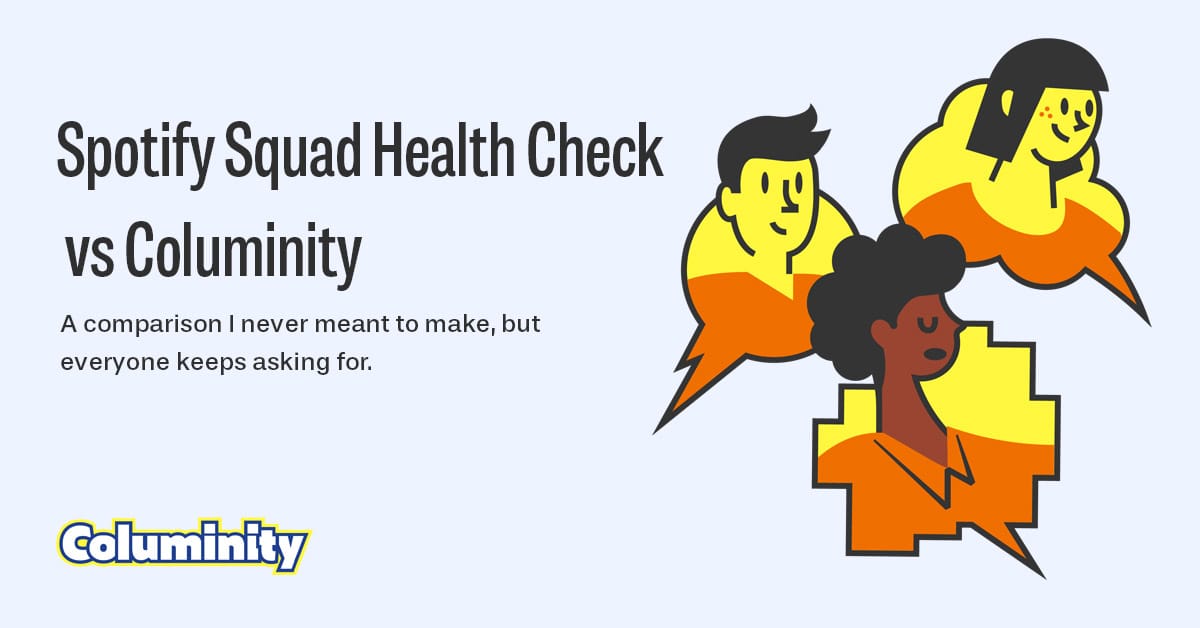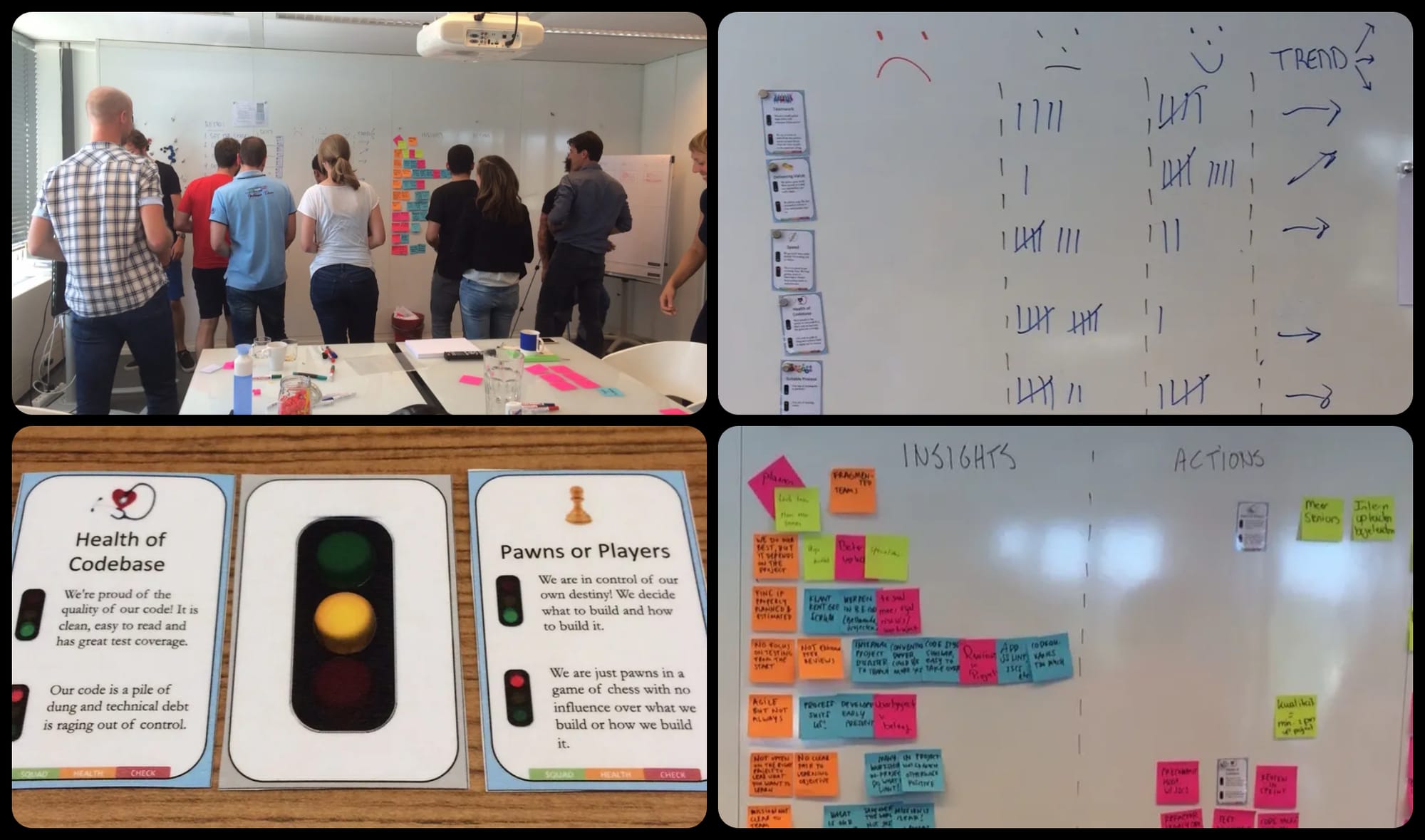Spotify Squad Health Check vs Columinity

When we developed Columinity, we deliberately avoided doing competitor research. We didn’t want to be influenced. And honestly, we’ve always found those comparison tables on websites a bit dull and outdated.
Still, almost every week, I run into organizations that use the Spotify Squad Health Check and ask how it differs from Columinity. I’ve gone through all the emotions by now: surprise, curiosity, confusion, frustration, and finally acceptance (or at least that’s what I tell myself).
This week, I accidentally discovered that my article “How I Used the Spotify Squad Health Check Model” is one of my most-read pieces (though not liked — interesting 🤔). It felt like the universe was giving me a gentle nudge: “Go on, do something with it.”
Spotify Squad Health Check
The SSHC is a simple self-assessment that helps teams reflect on their “health” across themes like collaboration, fun, and value creation. Each theme gets a color — green, orange, or red — giving teams a quick sense of how things are going. Its strength lies in simplicity: it makes things easy to discuss. At the same time, it’s heavily dependent on subjective impressions and the team's openness.
The Spotify Squad Health Check was initially developed within Spotify as a lightweight way for teams to discuss how they were doing, not as a formal measurement tool. Over time, it spread far beyond Spotify and was adopted by countless organizations, often in customized forms. Some teams add their own topics; others simplify it even further. That flexibility is part of its appeal, but it also makes it difficult to compare or track outcomes over time. In many cases, it becomes more of a symbolic ritual than a genuine source of insight, helpful for reflection, but limited when it comes to guiding real improvement.

Columinity
Columinity helps teams and organizations improve through conversations grounded in data and scientific insight. Using validated questionnaires and research-based models, it reveals what’s really happening in and across teams. It combines the voices of team members, stakeholders, and leaders to create a broader and more accurate picture. The result? Evidence-based feedback that turns reflection into meaningful, focused action.
Differences
- SSHC is a great way to start the conversation. Columinity goes further by showing why something happens and what you can do about it.
- SSHC reflects team opinions, while Columinity combines them with data, scientific models, and feedback from stakeholders and leaders.
- SSHC offers a snapshot in time; Columinity reveals patterns, causes, and trends that emerge over time.
- Where SSHC often ends with “interesting discussion,” Columinity turns insights into clear, trackable improvement actions.
- While SSHC focuses on a single team, Columinity helps organizations see the bigger picture — how teams relate, influence, and evolve together.
Closing thoughts
The simplicity of SSHC is what makes it powerful. Columinity builds on that simplicity by adding depth, data, and scientific insight. Because in the end, great conversations alone don’t change much, evidence-based action does.
So if you’ve been using SSHC and wondered what the difference is, hopefully this clears things up. Ideally, your next thought is, “Maybe it’s time for Columinity." 😃
Disclaimer: I haven’t done any research into SSHC's evolution over the years. Maybe it's become a more evidence-based product by now; I don’t know. The versions I still see in organizations, though, are the classic “traffic light” ones.


